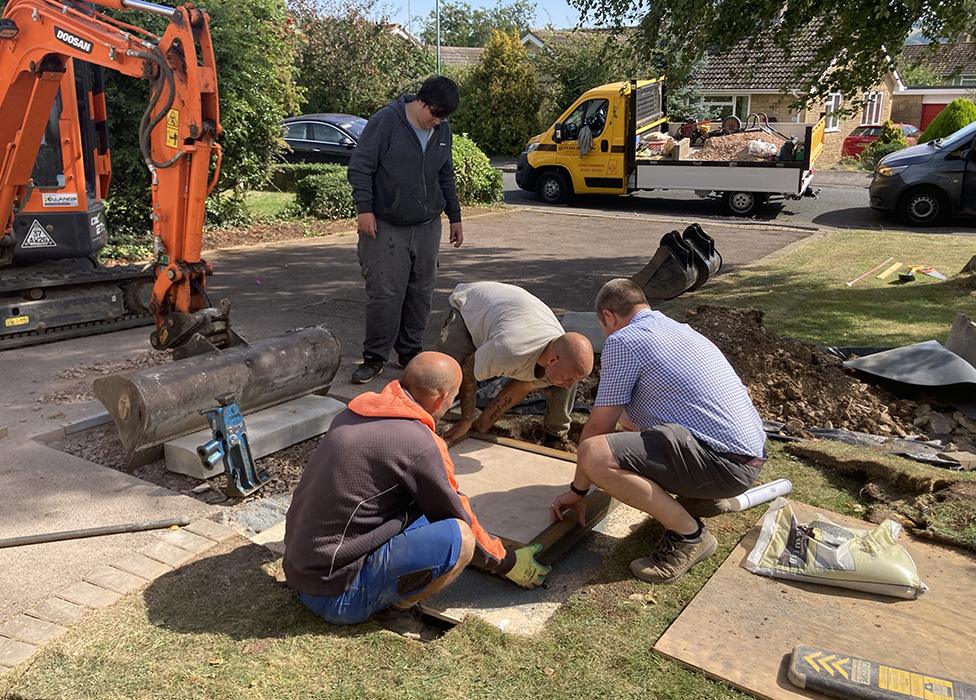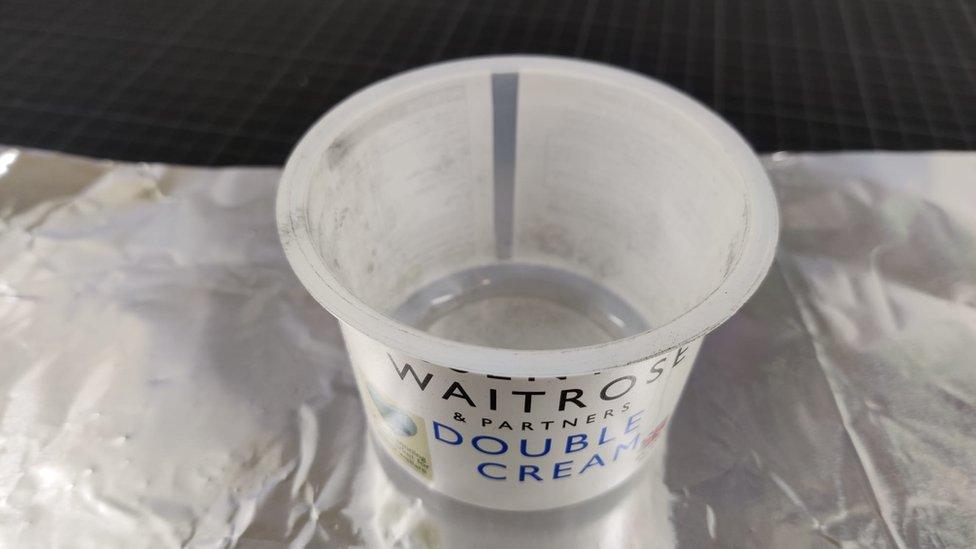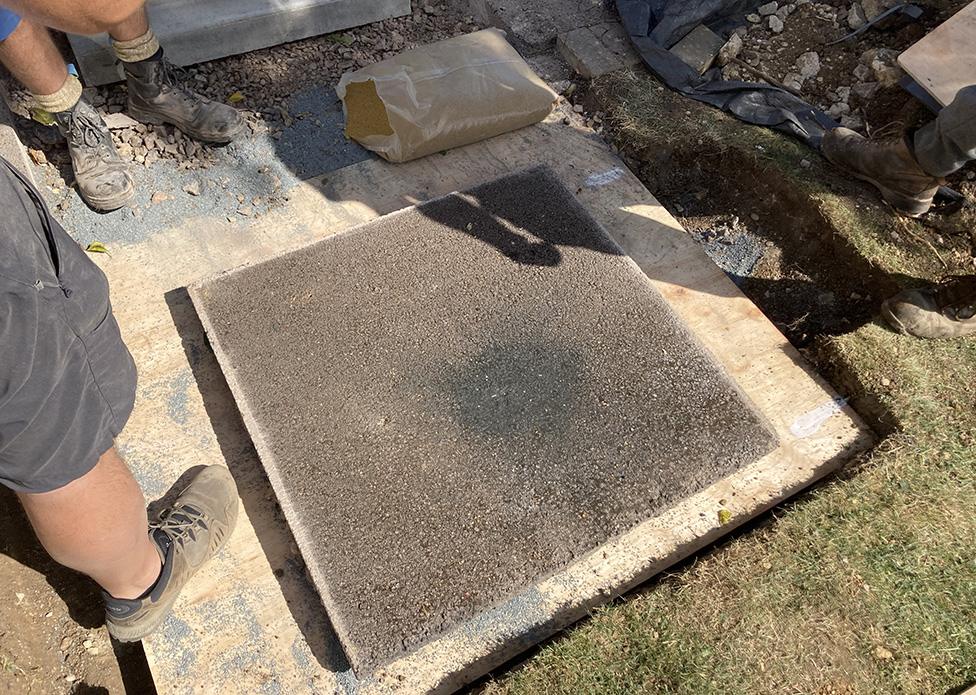Winchcombe meteorite driveway to go on display
- Published

It was a delicate job because the tarmac could have broken into many pieces
It’s the most famous driveway in Britain and a section of it is now heading to London’s Natural History Museum to go on public display.
Workmen have lifted the tarmac where a meteorite fell on the Gloucestershire town of Winchcombe in February.
It was the first space rock in 30 years to be seen to come down over the UK and then be recovered.
And that’s given the driveway to the home of the Wilcock family what you might call celebrity status.
The remains of the stony meteorite, known as a carbonaceous chondrite, have long since been removed. Scientists were eager to get studying it as soon as possible because it holds chemical clues to the formation of the Solar System some 4.6 billion years ago.
But the driveway, with its mini-crater, has a fascination, too.

The Wilcock family plan to take visitors on walking tours of Winchcombe
Timelapse video shows how workers cut and jacked up the valuable driveway in Gloucestershire
The all-important segment where the rock went "Splat!" has been protected these past six months by a covering board; and when the weather was particularly bad, a car was strategically placed over the top of it as well.
The Natural History Museum already displays some of the meteorite, but it thinks the tarmac will also prove to be a popular attraction. It's all part of the story, along with the Waitrose cream pot into which the space rock fragments were initially swept.
Wednesday saw local construction company Grimshaw turn up at the home of Rob and Cathryn Wilcock, and their daughter Hannah, to carefully remove the indented section of drive.

The pot still has dusty traces from the driveway
In a well thought-out plan, the Grimshaw team first cut around the crater and then encased the tarmac with board and steel. Jacks gently pushed the square-metre slice on to a pallet for the journey to the capital.
"It's like one of my cakes, hoping it's going to come out of the tin in one piece," observed Cathryn half-way through the process.
Rob added: "I'm pleased in a way that it's going but I'm also a bit nostalgic because we've got used to it being there. It's something that's changed our lives and brought us into contact with a lot of really interesting people. And, of course, it really has put Winchcombe on the map. It's one of the most significant things that has ever happened in this town."

Success: The square of tarmac - with "Splat!" mark - is lifted clear and ready for the journey to London
The Wilcocks now have a large hole where the crater once was, but they plan to make the area good in the next few weeks and have already commissioned a plaque to go on the spot.
The family, along with scientists from the Natural History Museum, will shortly be running an education programme with local primary schools. The museum in the town also now has its own special exhibition, and Mr and Mrs Wilcock say they will conduct walking tours of Winchcombe to show visitors where other pieces of the space rock came down.
Those tours will end on their driveway where the visitors can take selfies next to the plaque.
